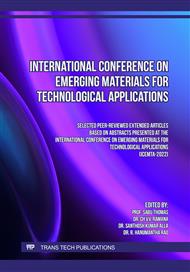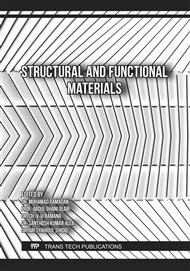p.3
p.11
p.19
p.29
p.39
p.45
p.53
p.65
Development of Graphitic 2024 Al Alloy by Mechanical Alloying
Abstract:
In this study, the 2024 Al powder with different weight fractions of graphite is mechanically milled using a high-energy ball mill for 3 hours each in the nitrogen environment. The milled powder is compacted at an elevated temperature. X-ray diffraction is used to phase analysis of milled powder as well as compacted specimens. Optical microscopy is used for microstructural analysis and hardness measurements are done for the evaluation of mechanical properties. The hot compacted specimens are also tested for their wear properties. Results show that there is no new phase formed during mechanical milling. But, after hot compaction of the milled powder, Al2Cu formed due to precipitation. No reaction is observed between the aluminum and the carbon (graphite) after milling as well as hot compaction. Microstructures of all hot compacted specimens are not showing pores, which, signifies full density after compaction. The formation of Al4C3 is not observed at any stage of processing. Therefore, graphite is uniformly distributed in all specimens, and the same is observed at grain boundaries of α-Al grains in the microstructures. Hardness increases with the addition of 1 wt.% graphite but it decreases with a further increase in graphite. The wear resistance of 2024 Al with 1 wt% graphite is the highest among all the compositions. The high hardness and wear resistance of 2024Al with 1 wt% graphite is the consequence of precipitation of Al2Cu during hot compaction and the presence of graphite which creates hindrances in the metal matrix. The presence of free graphite in the vicinity of grain boundaries acts as a solid lubricant which improves wear resistance of 2024 Al.
Info:
Periodical:
Pages:
3-10
Citation:
Online since:
October 2023
Authors:
Keywords:
Price:
Сopyright:
© 2023 Trans Tech Publications Ltd. All Rights Reserved
Share:
Citation:



